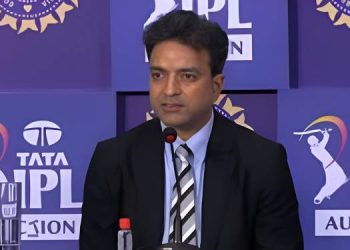India’s sports ecosystem is on the cusp of a major transformation, poised to reach $130 billion by 2030, according to a report released earlier this year called ‘Think Sports: Unlocking India’s $130B Sports Potential’ by Google and Deloitte.
This growth, a 14% CAGR – nearly double the pace of India’s GDP – signifies a fundamental shift in how Indians consume and engage with sports, driven by increasing government investments, a rising trend of multi-sport culture, wide digital adoption, and a range of quality sports content.
Beyond economic growth, sports in India hold immense potential for social change, fostering youth development and empowering communities, highlighting the need for strategic investment in grassroots development and infrastructure to drive positive impact. The report also projects the creation of up to 10.5 million jobs and $21 billion in indirect tax revenue by 2030.
This potential for social and economic growth underscores the need for collaboration across the sports ecosystem. India’s booming sports sector presents a huge opportunity – from government agencies and sporting bodies to businesses, investors, content creators, and fans – to collaboratively shape the future of sports and propel the country forward.
Medianews4u.com caught up with Rohan Padha, Partner, Deloitte
Q. What key trends are shaping the growth of India’s sports industry, and how are factors like government initiatives, private investments, driving this transformation?
1. Rising government investment in sports – evidenced by the sports budget growing 1.6x over the last five years and with sports infrastructure projects worth 2.39 billion currently part of the National Investment Pipeline
2. Growing digital adoption – with rising smartphone and internet penetration, coupled with low data costs is widening the accessibility of sports in India and driving the growth of India’s sports fandom. 90% of Indian sports fans say they currently use digital platforms to access sports
3. The growth in sports content with sports related movies and documentaries having jumped 47% between 2017 and 2024, relative 2010 – 2017 and 50% of fans saying they started following sports after coming across digital sports content
4. A rising health-conscious culture and growing sports & fitness participation – with number of people who go to the gym and people who play sports having grown 3x and 4x respectively between 2019 and 2023
5. Rising household incomes are seeing growing discretionary spending on sports. We have seen this with spending propensity on sports merchandise – with only 41% people earning under 300 dollars a month being willing to buy sports merchandise relative to 59% of people earning over 600 USD a month – highlighting the impact of growing income on the sports economy.

Q. What growth trends are being seen in e-sports in India, and is it becoming a viable profession?
1. The biggest growth trend we’re seeing is the rise of state government impetus around Esports. We are seeing multiple state governments (Meghalaya, UP, Tamil Nadu, Gujarat) all announcing they will all independently set up e sports tournaments.
2. There is work to be done for it become a viable profession in India – primarily around the number of tournaments, which in turn will create opportunties for players. There were 22 events in 2023, which is expected to grow to 35. There is a need for more tournaments to drive Esports’ growth as a viable profession in India
Q. How are evolving digital streaming models and ad strategies reshaping IPL’s revenue dynamics, and could paywalls return for most sports content including the IPL amid industry mergers like Disney-Star India and Viacom18?
1. Over the last decade, digital streaming has unlocked an entirely new revenue stream that runs in parallel in to TV broadcast. The last media rights auction cycle saw TV and digital rights valued nearly the same, cementing digital streaming’s position as a core part of the broadcast ecosystem
2. In addition to AVOD models, sachet size pricing (one time payment for single event viewing) for sports events could help make sports more accessible to first time viewers at a lower price point

Q. How are technological advancements —such as AI, AR/VR, and blockchain and Gen Z’s digital-first approach driving the growth and commercial viability of India’s sports industry?
1. AI – AI advancements such as automatic ball/ player tracking, can mean that games can be captured, stored and broadcasted at very little cost and effort. Further AI can be used for converting video into rich data by adding attributes to each action / activity which can futher be converted into insights for better coaching, scouting etc.
2. Gen Z’s digital first approach is opening a number of commercial opportunities – especially in the non-live content sphere with the consumption of content such as highlights, interviews and podcasts which have served as a revenue boost to the industry.
We’re seeing non-live content consumption now outpacing live content consumption by 20% (this is across all demographics)
Q. What differences are being seen in terms of how Gen Z consumes sports compared with Millenials and Gen Y?
1. Smartphone first – 41% of GenZ use smartphones as their primary screen for live content, relative to 38% and 23% for Millenials and Gen X respectively. This is further evidenced with non live content – 52% of GenZ use smartphones as their primary device for non-live content, compared to 43% and 35% for Millenials and Gen X respectively
2. Time spent on sports – GenZ on average spends 6.6 hours a week consuming sports content, compared to 6.3 for millenials and 5.9 for Gen X
3. Year-round engagement – 46% of GenZ fans engage with off season sports content, relative to 40% of millenials and 37% of Gen X fans
4. Sports advertising’s influence – About 71% of GenZ fans have bought something based on an ad they saw during a sports match1 (vs. 64% of Millennials and 50% of GenX)
5. Willingess to spend – About 78% of GenZ fans are willing to purchase official merchandise (vs. 69% of Millennials and GenX)
Q. What is the long-term potential of new non-cricket sports like Pickleball and Padel in India, given the growing interest and changing audience dynamics?
1. 90% of fans consume two or more sports and the sport that two out of three fans interact with the most is a sport beyond cricket – highlighting the significant scope for growth for sports beyond cricket
2. Pickleball as a sport has seen strong growth, expanding from a single court in 2016 to 1,500 in 2024, with 100,000 regular players
Q. Cricket accounts for 90 percent of sports viewership and revenue. Will this change in the coming three to five years?
While we expect cricket’s share of the market to largely remain the same, the growth of the overall sports market will see sports other than cricket create larger viewership bases over the next 3 – 5 years.
Q. Some leagues like IPL, PKL have worked. But some leagues in a sport like tennis have failed. What are the learnings from this?
1. Leveraging technology for enhanced fan engagement:
-Technology plays an important role in attracting and engaging fans, particularly the digitally savvy Gen Z demographic, which constitutes 43% of India’s sports fans. Emerging sports can utilize digital platforms, such as YouTube, social media, and streaming services, to broadcast live matches, share highlights, and create interactive content, fostering deeper fan connections and expanding their reach.
-The integration of fantasy sports and gaming can further amplify fan engagement. By creating fantasy leagues and interactive games around their sports, emerging leagues can capitalise on the growing popularity of these platforms, attracting sponsorships and investments.

2. Showcasing unique value propositions and engaging fans year-round:
-Fans are increasingly consuming non-live content, such as player interviews, behind-the-scenes footage, and documentaries.
Emerging sports can differentiate themselves by producing high-quality content that caters to these evolving preferences, keeping fans engaged even during the off-season.
3. Creating incentives for sponsors to look beyond cricket:
-Brands are increasingly seeking to target specific demographics, particularly Gen Z and women, who are demonstrating growing interest in sports. Emerging sports can offer sponsors valuable opportunities to reach their desired target audiences through a targeted approach.
-Emerging sports can attract sponsors by offering creative and cost-effective sponsorship packages that go beyond traditional advertising. For instance, they can provide opportunities for product integration, branded content creation, and interactive fan experiences.
Q. With sports tourism on the rise are there opportunities for branded content?
There are significant branding and advertising opportunities in sports – especially on-ground. We have seen that broadcast has capitalised on these opportunities very well.
Offline channels show significant monetisation potential and this will be an area to look out for in the coming years.

















